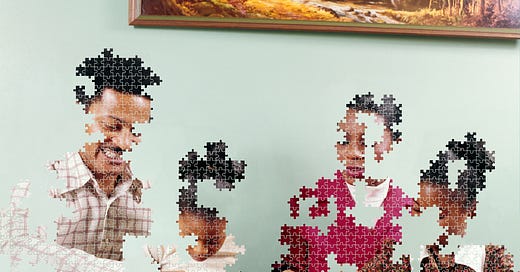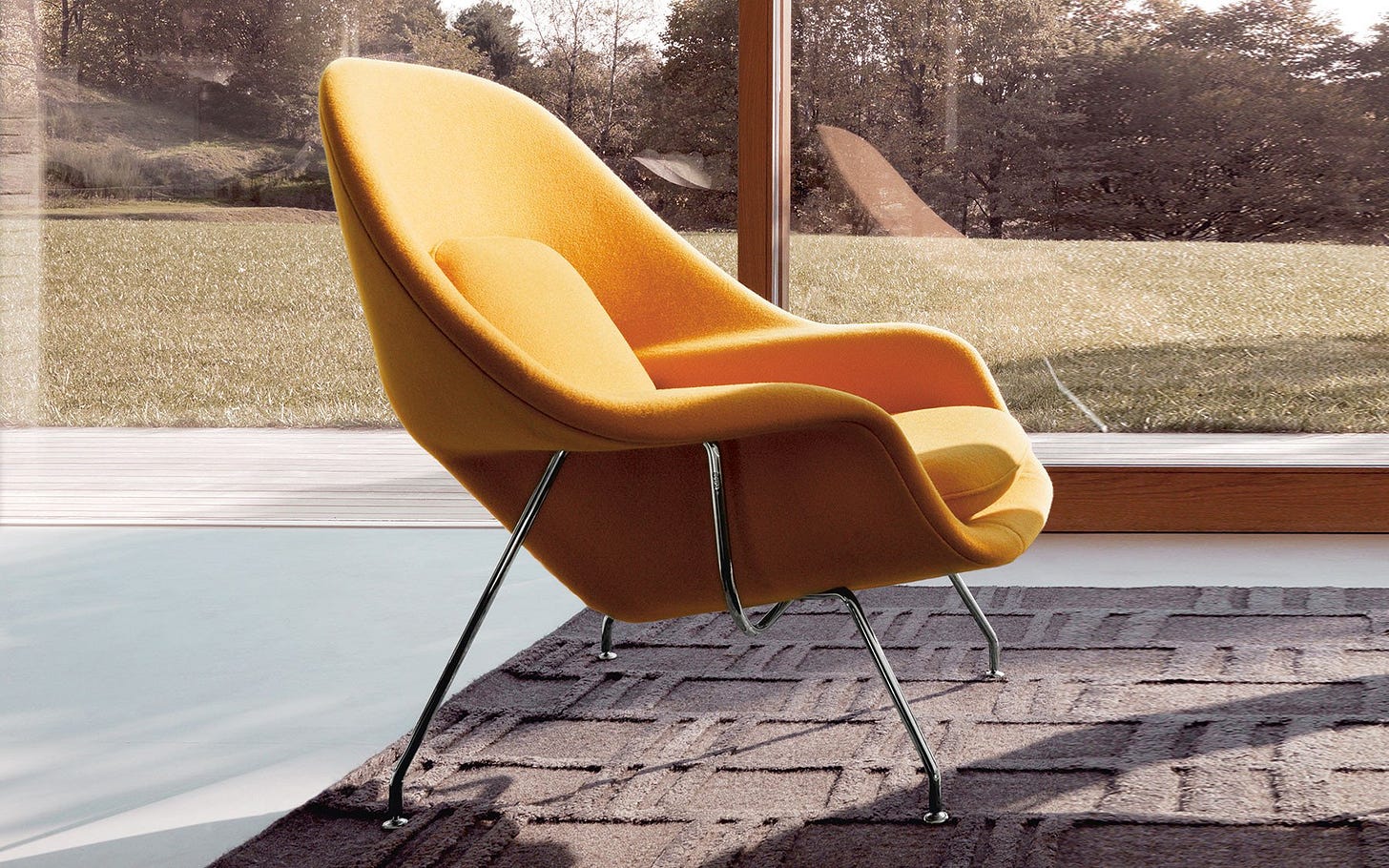#17 Living together, Womb chairs & the design intersection
Welcome to Design Lobster #17. In this week’s issue we’re squeezing into new types of household + squashy designer chairs. Scooch over. 🛋
Question: How might we live together?
Artwork by Weronika Gesicka
During lockdown, lots of families with adult children have unexpectedly found themselves living together again, adopting a pattern of multi-generational living that hasn’t been common in developed countries for more than a century. In the 20th century, nuclear families where children leave on reaching adulthood have displaced the big extended families of the 19th – prioritising individual freedom over familial ties and community.
I was very interested recently to read about Co-Abode and Kin, digital services that aim to encourage new forms of living and of kinship, albeit to quite different audiences. Co-Abode matches single mothers who are interested in living in a shared household, aiming to save them money and time, and reduce social isolation and loneliness. Kin offers urban apartments in building with shared spaces and amenities that are tailored for young families – aiming to foster a community that can help each other out in the way that extended families once did.
I’m intrigued by the way these projects are engaged in an ambitious project to redesign how we relate to each other as humans – addressing the imbalance between freedom and community that has built up in the last century of unbridled individualism.
Design takeaway: Does your design acknowledge alternative forms of kinship beyond the nuclear family?
Long-read by David Brooks on the nuclear family and what might follow it.
Object: Womb Chair
This roomy chair was designed by Eero Saarinen for Florence Knoll who requested ‘a chair that was like a basketful of pillows’ in 1948. Made with chrome legs and a fibre glass shell that was hand-upholstered in a range of solid-colour fabrics, it perfectly encapsulates a particular kind of mid-century living. The smooth lines belie how technically difficult the chair was to achieve, requiring Saarinen to engage the services of a shipbuilder to get the fibreglass component right.
What I think is interesting about the chair is the way it tried to achieve comfort through the shape of its shell, rather than the depth or amount of cushioning. Both Saarinen and his contemporary Charles Eames were interested in this question, exploring materials like fibreglass and plywood that could be moulded or bent into shapes that accommodated the human body. In this chair, the impression one has as a sitter is of being cosily enveloped like a foetus, hence the name.
Design takeaway: Could you achieve comfort for your user in a different way?
Watch Chair Times – Vitra’s documentary on the history of the chair - available for free for a limited time.
Quote: “Design lives right at the intersection of philosophy and science. We use metaphors and analogies to venture into building what hasn't been built. We use science to measure, prove, and evolve our initial thinking further.”
– Adrian Zumbrunnen, Product Designer
I like the vision of design behind this quote. Intuitive when the terrain is unknown and open-minded thereafter to revising those intuitions based on what has been learned. At once instinctive and practical.
Keep venturing. 🦞
PS. I’ve been reading the book How Design Makes the World by Scott Berkun, who I know is a reader of Design Lobster. I highly recommend it if you’re looking for your next design read. 📚
Has this email been forwarded to you? Sign up below to get the newsletter delivered to you. ✏️





